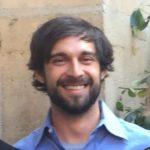Link to Pubmed [PMID] – 29312891
Front Cell Infect Microbiol 2017;7:505
The study of intracellular bacterial pathogens in cell culture hinges on inhibiting extracellular growth of the bacteria in cell culture media. Aminoglycosides, like gentamicin, were originally thought to poorly penetrate eukaryotic cells, and thus, while inhibiting extracellular bacteria, these antibiotics had limited effect on inhibiting the growth of intracellular bacteria. This property led to the development of the antibiotic protection assay to study intracellular pathogens . More recent studies have demonstrated that aminoglycosides slowly penetrate eukaryotic cells and can even reach intracellular concentrations that inhibit intracellular bacteria. Therefore, important considerations, such as antibiotic concentration, incubation time, and cell type need to be made when designing the antibiotic protection assay to avoid potential false positive/negative observations. , which causes the human disease known as the plague, is a facultative intracellular pathogen that can infect and replicate in macrophages. is sensitive to gentamicin and this antibiotic is often employed in the antibiotic protection assay to study the intracellular life cycle. However, a large variety of gentamicin concentrations and incubation periods have been reported in the literature without a clear characterization of the potential influences that variations in the gentamicin protection assay could have on intracellular growth of this pathogen. This raised concerns that variations in the gentamicin protection assay could influence phenotypes and reproducibility of data. To provide a better understanding of the potential consequences that variations in the gentamicin protection assay could have on , we systematically examined the impact of multiple variables of the gentamicin protection assay on intracellular survival in macrophages. We found that prolonged incubation periods with low concentrations of gentamicin, or short incubation periods with higher concentrations of the antibiotic, have a dramatic impact on intracellular growth. Furthermore, the degree of sensitivity of intracellular to gentamicin was also cell type dependent. These data highlight the importance to empirically establish cell type specific gentamicin protection assays to avoid potential artificial data in intracellular studies.
